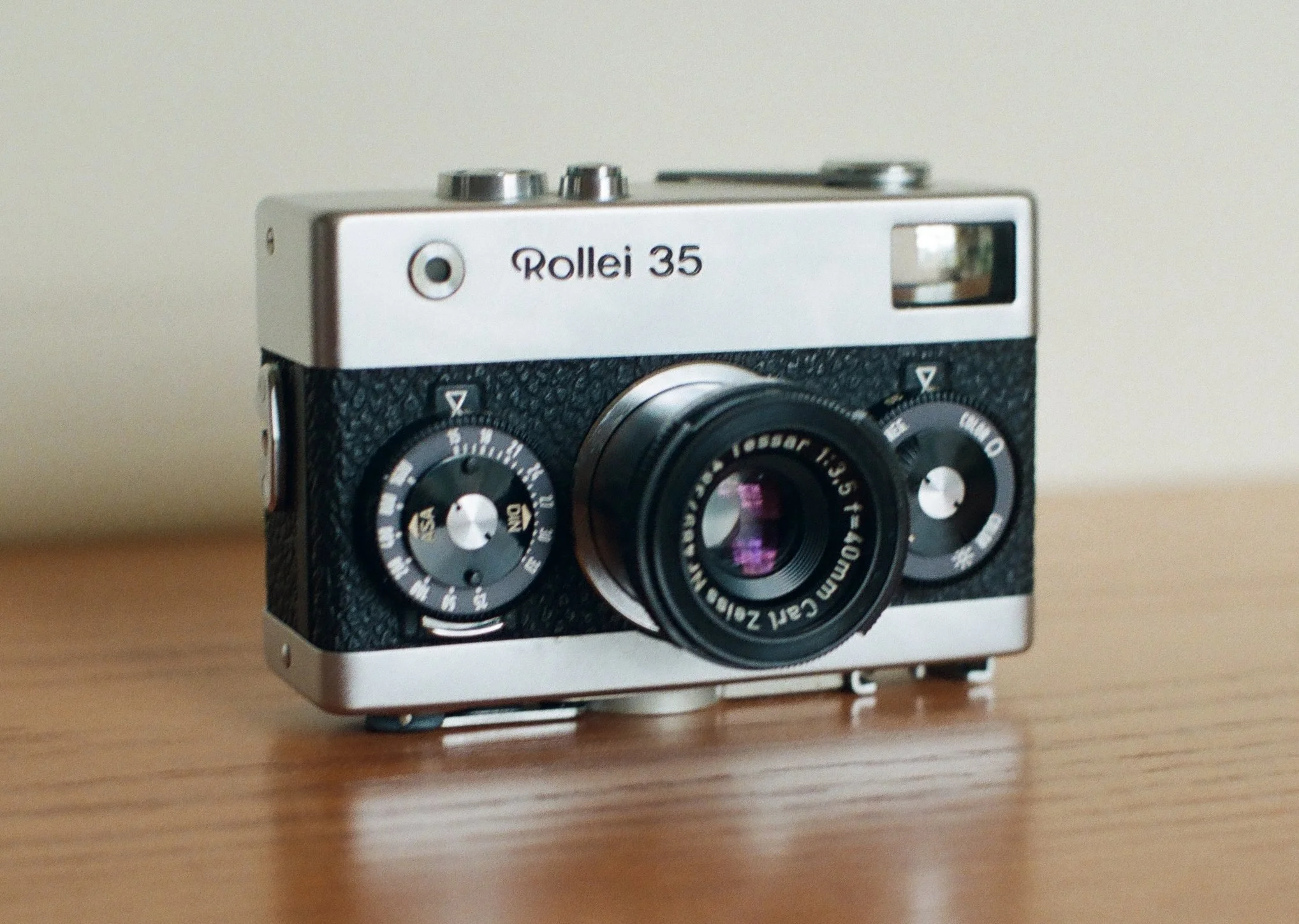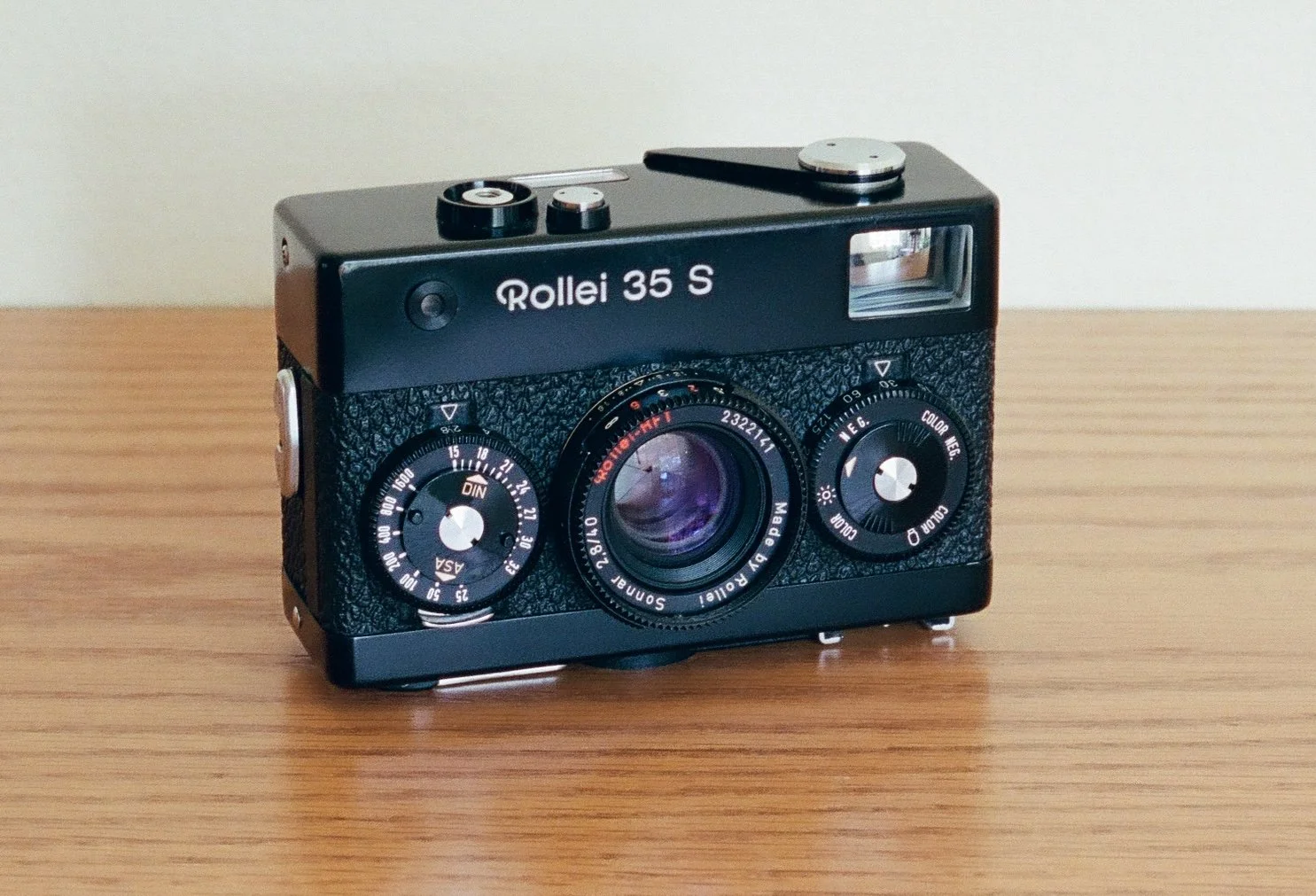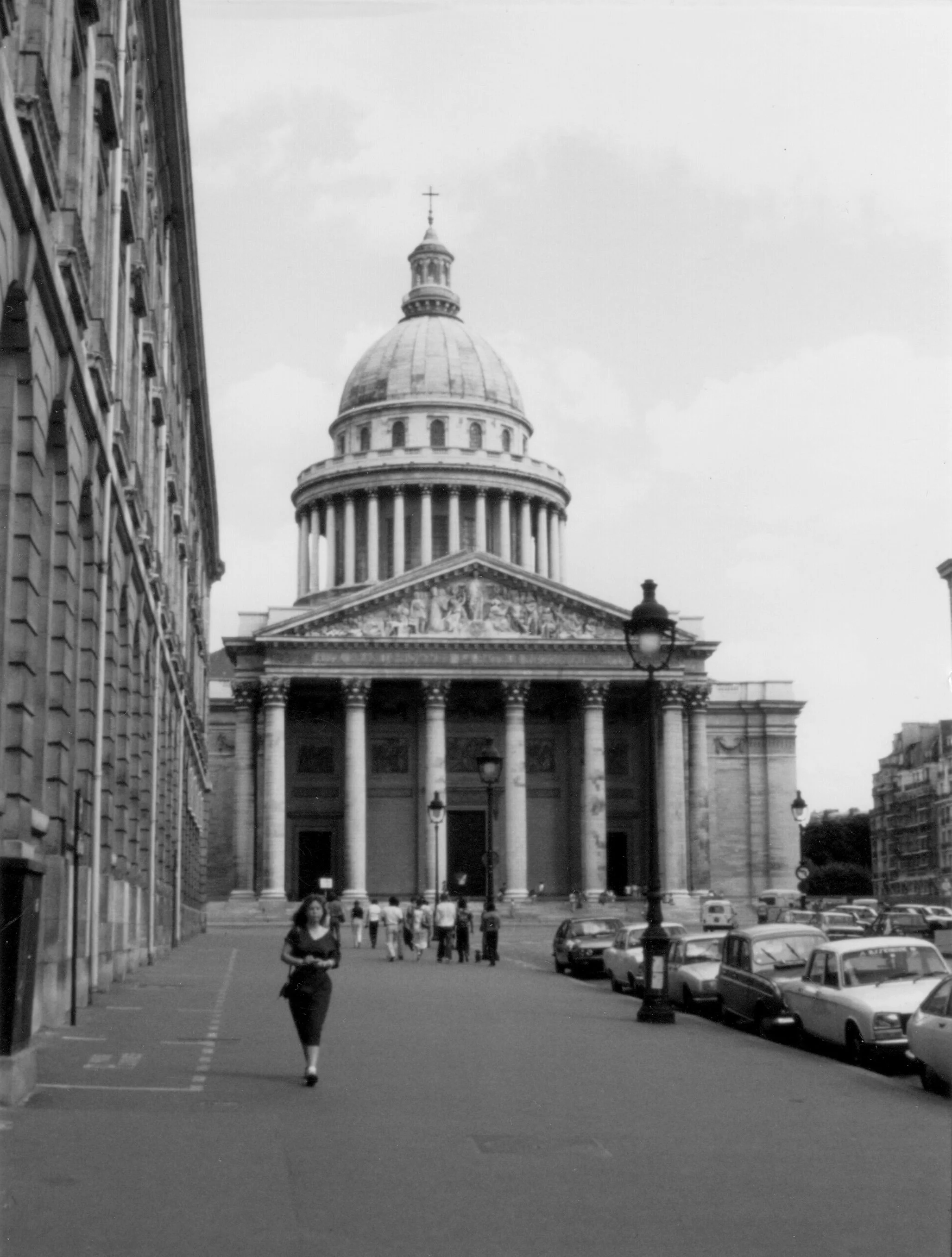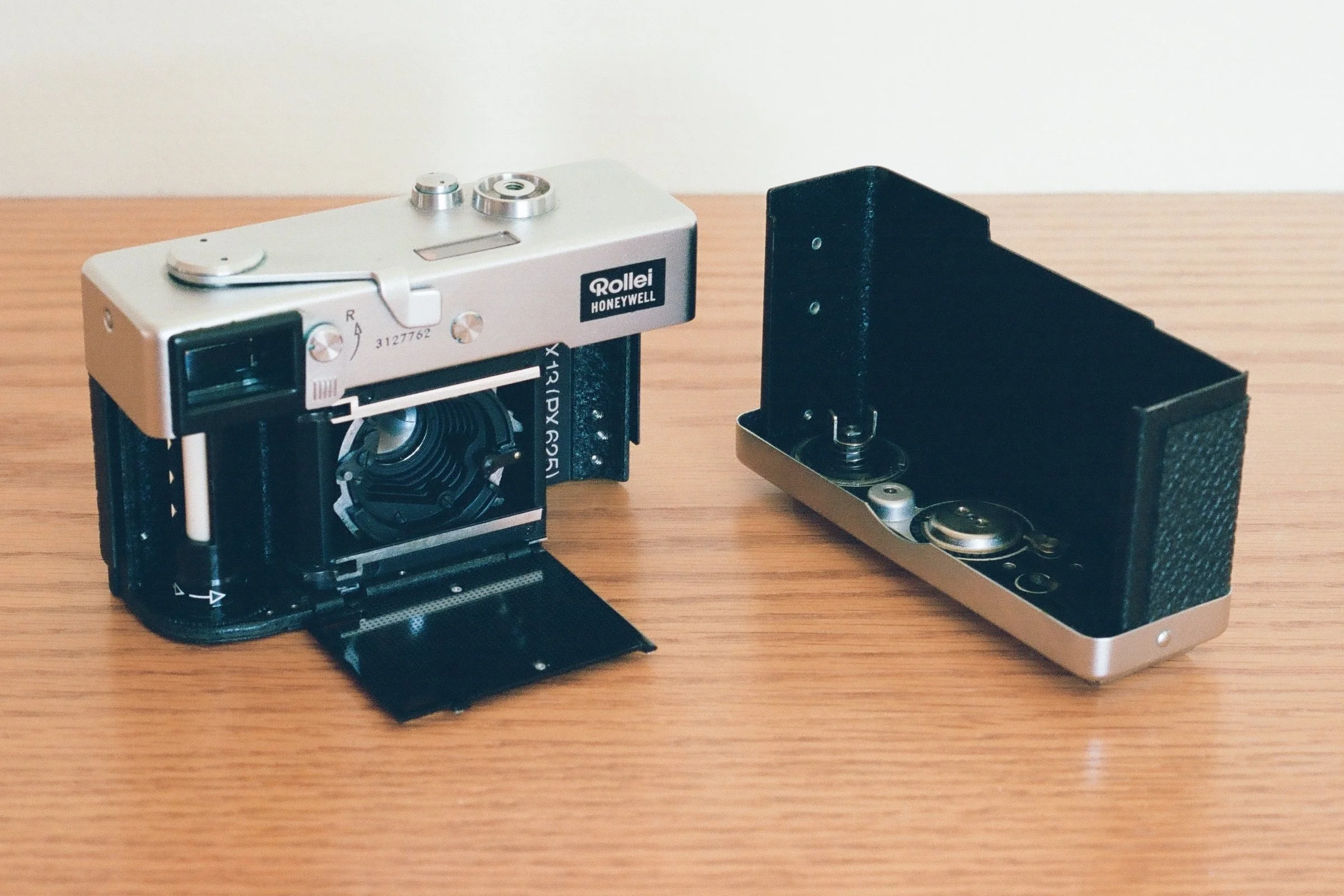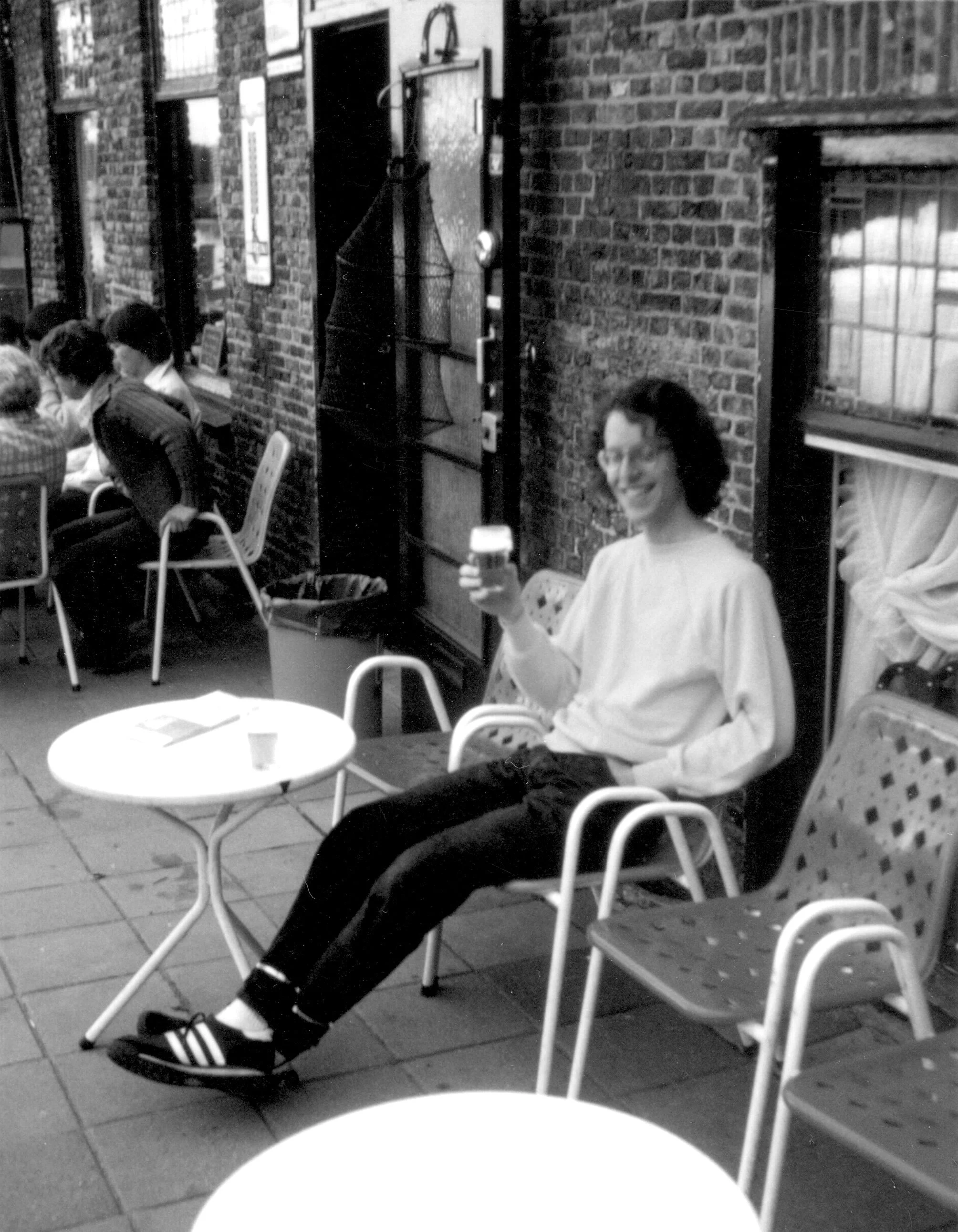Rollei 35
Super-small full-frame 35mm camera with a cult-like following.
Rollei 35 — an early German-made example. With the folding 40mm f/3.5 Carl Zeiss Tessar lens extended and ready to take a picture. (Color photos of the cameras were made with a Nikon F, 55mm f/3.5 Micro-Nikkor-P.C, and Portra 400.)
A simple set of design requirements
The Rollei 35 design team seems to have been given three requirements: (1) super small 35mm camera, (2) first class optics, and (3) metal structure. Other things could be traded off.
They succeeded. ‘For a long time they [the Rollei 35s] were the world’s smallest mass produced full-frame 35mm cameras’ (Evans, 1986). This camera was popular when new and today it has an enthusiastic following.
Washington Metro, Bethesda Station. Rollei 35 T, 40mm f/3.5 Tessar, HP5+, 2024.
f/8 and be there
Design requires trade-offs and to reduce the size so much required sacrifices. The most important was the rangefinder — the Rollei 35 doesn’t have one, it’s a scale focusing camera. Also, the lens is non-interchangeable. Finally, the camera’s metal structure lacks the heavy machined-like feel of some other German 35mm cameras.
The non-interchangeable lens is not such a big drawback for me. As you can see from my work, I use normal focal length prime lenses most of the time. Except for close focus subjects, scale focusing often works well.
With its super-portability and scale focusing, the Rollei 35 is a natural for the ‘f/8 and be there’ approach.
Rollei 35 S, made in Singapore. With its 40mm f/2.8 made-by-Rollei Sonnar lens shown folded.
Place du Panthéon, Paris. Rollei 35 S, 40mm f/2.8 Sonnar, Kodachrome 64. My first trip to Paris. I photographed the slide onto Tri-X, then made a silver gelatin print. Negative and print: 1979.
Manual exposure
The Rollei 35 is an all-mechanical, manual exposure camera. The battery is only for the meter. Years ago, for example in Paris for the photo above, I used the camera’s meter and it worked well, even for Kodachrome film which doesn’t have wide exposure latitude.
Today I leave the battery out and use a hand-held meter or the sunny 16 rule.
Vancouver, B.C. University of British Columbia, AMS Nest. Rollei 35 T, 40mm f/3.5 Tessar, HP5+, 2024.
Rollei 35 ready to load film. As with the Nikon F, the back removes and it’s a metal-to-metal fit with no foam light seal material — an excellent design feature.
A long production run
Rollei 35 production started in Germany in 1967. Some sources cite 1966 rather than 1967, but per Evans (1986), ‘factory data lists the first production date as 1967’. In a desperate attempt to stay cost-competitive with the Japanese, Rollei moved manufacturing to Singapore in 1973. Production ended in 1982.
One of my Rollei 35 cameras was made in Germany, the other two in Singapore. The build quality is identical. The lenses are all high-end designs, but ‘the cameras made in Germany incorporate Zeiss optics. After production of the line was moved to Singapore, the lenses were made by Rollei under license from Zeiss.’ (Evans, 1986). My cameras reflect this:
Rollei 35, made in Germany: 40mm f/3.5 Carl Zeiss Tessar.
Rollei 35 T, made in Singapore: 40mm f/3.5 Tessar made by Rollei.
Rollei 35 S, made in Singapore: 40mm f/2.8 Sonnar made by Rollei. This is one of only two cameras I ever bought new (the other was the 4x5 Tachihara).
I can’t tell the difference between them in terms of handling, feel, or photographic results.
Delft, Netherlands. At the end of a bike ride. A fellow rider made this picture using my Rollei 35 S, 40mm f/2.8 Sonnar, and Kodachrome 64. I photographed the slide onto Tri-X, then made a silver gelatin print. Negative and print: 1979.
Maintenance and repair
I purchased the Rollei 35 S camera new at a camera shop in New York City in the mid-1970s. It’s one of the few cameras I ever bought new (used cameras are my specialty).
The only Rollei 35 servicing I’ve had done, was to repair damage to the lens mount of the 35 S after the camera fell out of my backpack some years ago.
Washington Metro: Navy Yard Station.. Rollei 35 T, 40mm f/3.5 Tessar, HP5+, 2024.
References / further reading
Camera manual: orphancameras.com
More references:
Evans, A. 1986. Collectors Guide to Rollei Cameras. Grantsburg, Wis.: Centennial Photo Service.
Hunt, B. 2024. Film Camera Zen: A Guide to Finding the Perfect Film Camera. Los Angeles: Chronicle Chroma.
The Rollei 35 is on pp. 162-163. ‘There are several versions, and because of the cult status, there are companies that refurbish and renew these cameras…’
McKeown, J.M. and J.C. 1996. McKeown’s Price Guide to Antique and Classic Cameras, 1997-1998. Grantsburg, Wis.: Centennial Photo.
p. 207: ‘The Rollei 35 series of high-class compact 35mm cameras is highly appreciated by both users and collectors’.
Zaccheus, M. 2017. ‘Made by Rollei Singapore: A Peek into History’. https://www.straitstimes.com/singapore/made-by-rollei-singapore-a-peek-into-history accessed March 19, 2025.
This tells the story of the Rollei factory in Singapore, with evocative photographs. ‘In 1971, the Economic Development Board persuaded the German company Rollei to set up a production factory in Singapore…’ It was part of the Singaporean government’s effort to ‘move away from low-wage industries to higher-technology and value-added ones in the 1970s’ and was a key element in Rollei’s ultimately unsuccessful bid to compete with the Japanese.
